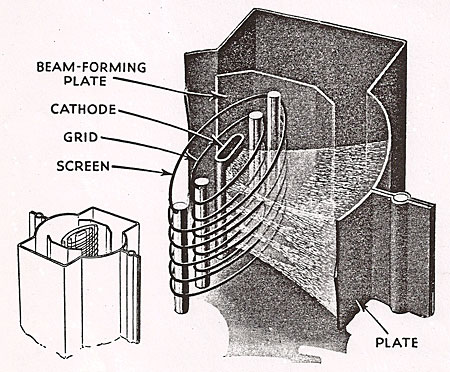| Columns Retired Columns & Blogs |
Manley Laboratories 175 monoblock power amplifier A Bit of History
Sidebar 1: A Bit of History
In the July 1936 RCA Review, R.S. Burnap recounted the development of the 6L6 at RCA's Radiotron Division. The power triode operating in class-A was recognized as the ideal output configuration—at least where its low efficiency (about 25%) and moderate power output were not practical obstacles. The power pentode, already around for several years at this time, was capable of class-A operation with nearly twice the plate efficiency of a triode, while requiring less than a third of the drive signal. The pentode's inherent fly in the ointment was rather large levels of third-harmonic distortion under large signal conditions, which unfortunately didn't cancel out in push-pull operation.
Radiotron's Otto Schade developed a new power-tube design combining the low-distortion characteristics of a triode with power sensitivity and efficiency exceeding those of a conventional pentode. Mr. Schade realized that the root cause of a pentode's third-order harmonic distortion was the suppressor grid. While this grid was quite effective in suppressing secondary emission from the plate, at low plate voltages (ie, large drive signals), an increasing number of primary electrons were driven back to the screen grid, causing a rapid drop in plate current (and attendant odd-order distortion of the waveform). It was also apparent that no practical change in the structure of the suppressor grid would eliminate this problem.
Mr. Schade's solution was to dispense with the suppressor grid and instead control secondary emission using the space-charge effect. He formed the electron flow from the screen grid to the plate into a high-density beam using beam-forming plates. At low plate potentials, this beam produces a space charge that drives secondary electrons back to the plate. The homogeneity of the space-charge region was maintained by suitably designing the contours of the cathode, grids, and plate. The proper positioning of the space charge was achieved through adjustment of the screen-plate spacing and the beam angle.
A further innovation was to use screen and control grids of constant pitch, these so assembled that the screen grid is hidden from the cathode by the control grid. This feature makes possible the uniform formation of electron-beam sheets between successive turns of the grid wires. It also reduces screen current and makes possible higher power output. This is a bit tricky to achieve in practice; often, final alignment of the grids is accomplished by viewing the grid structure under a microscope and sliding the grids manually until perfect alignment is obtained. Fig.1 shows an artist's conception of the structure of the new tube. Thus was born the world's first beam power tube.—Dick Olsher

Fig.1 Structure of beam power tube and formation by grid wires of beam sheets (from RCA Review, July 1936).
- Log in or register to post comments



































